Abstract
Digitonin solutions of labelled rhodopsin, containing 3H in the retinyl moiety, were prepared by two related methods. Labelled rhodopsin was also prepared for the first time in cetyltrimethylammonium bromide and purified by column chromatography. It was shown that only certain rhodopsin preparations on denaturation in the dark and the reduction with sodium borohydride gave up to 60% of the radioactivity in a fraction characterized as N-retinylphosphatidylethanolamine. Such preparations also gave a lipid-linked retinyl moiety at the metarhodopsin-I stage, but, as expected, a protein-linked retinyl moiety at the metarhodopsin-II stage. Other preparations however, gave exclusively protein-bound radioactivity at the native-rhodopsin, metarhodopsin-I and metarhodopsin-II stages. It is therefore conceivable that the formation of N-retinylphosphatidylethanolamine is due to a non-enzymic reaction resulting from the transfer of the retinyl moiety from its native site to an amino group of a favourably oriented phospholipid molecule. The only firmly established aspect of the rhodopsin active site remains the demonstration in our previous work that at the metarhodopsin-II stage the retinyl moiety is linked to an ∈-amino group of lysine. On the basis of chemical reactivity it is argued that the light-induced conversion of rhodopsin into metarhodopsin II involves a profound conformational change resulting in the dislocation of the retinylideneiminium chromophore from a non-polar environment in rhodopsin to a polar environment in metarhodopsin II.
Full text
PDF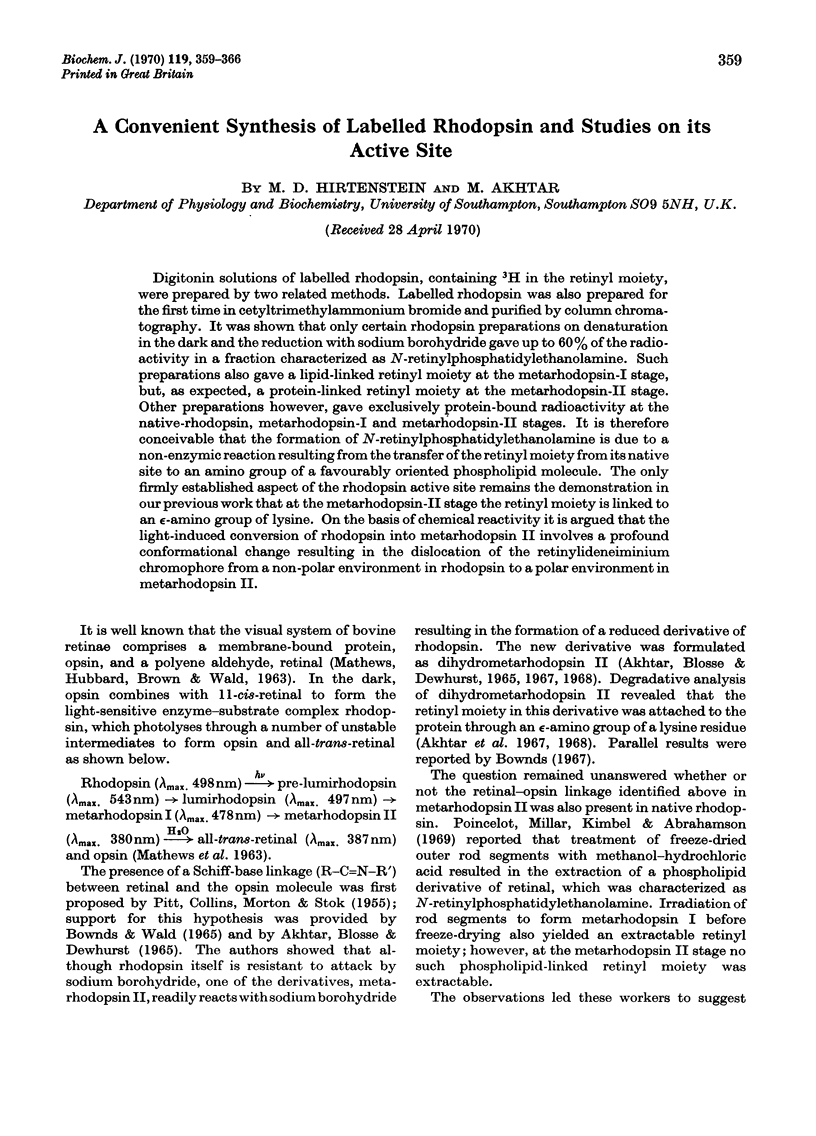
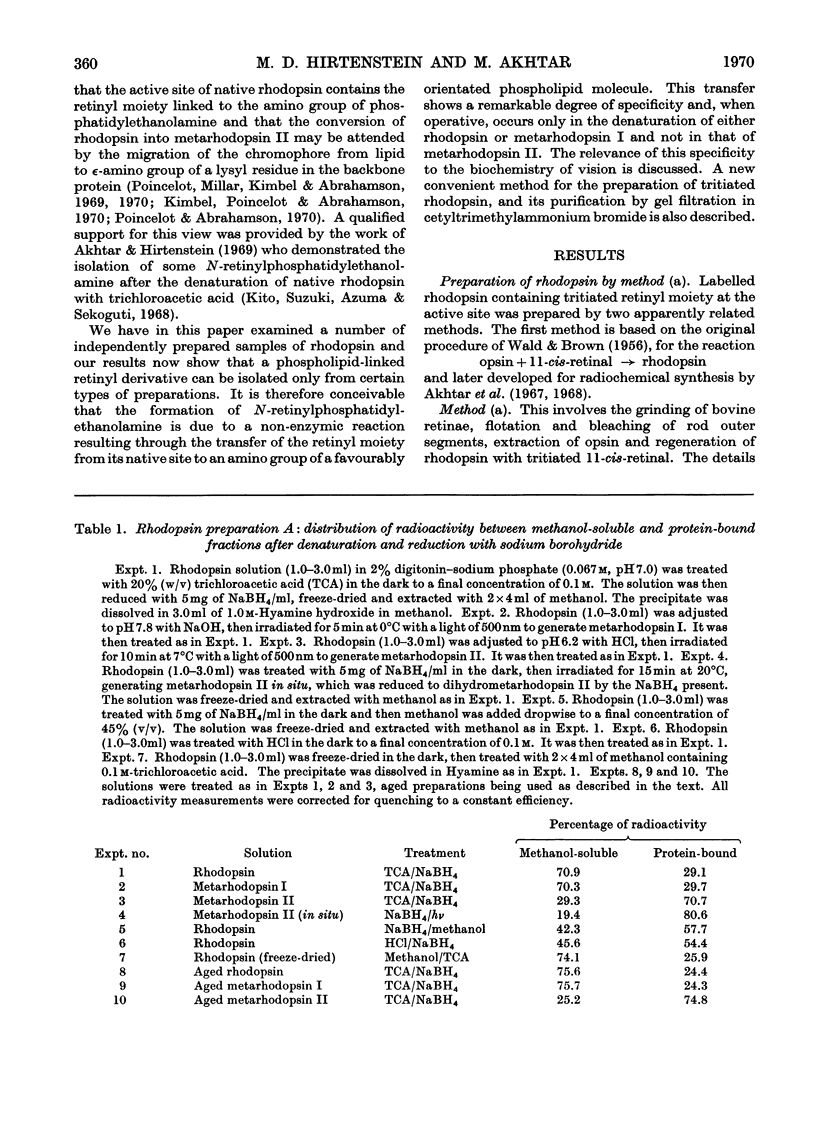

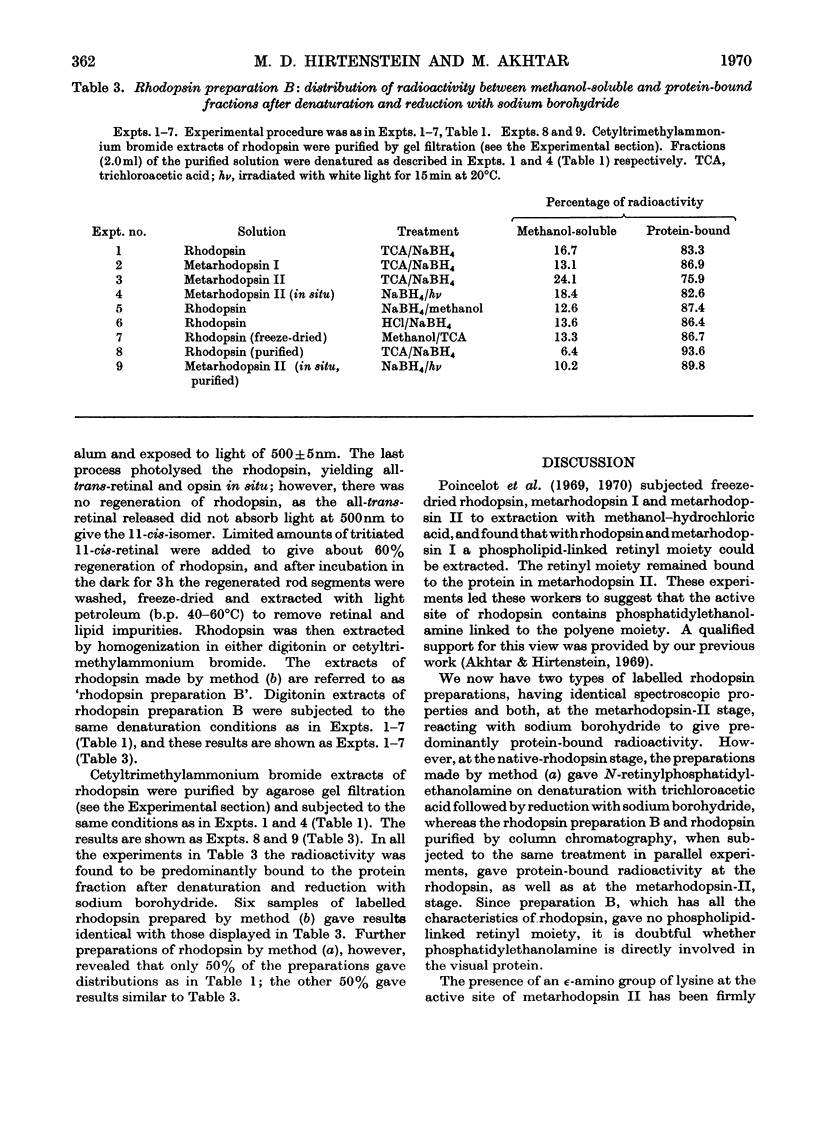
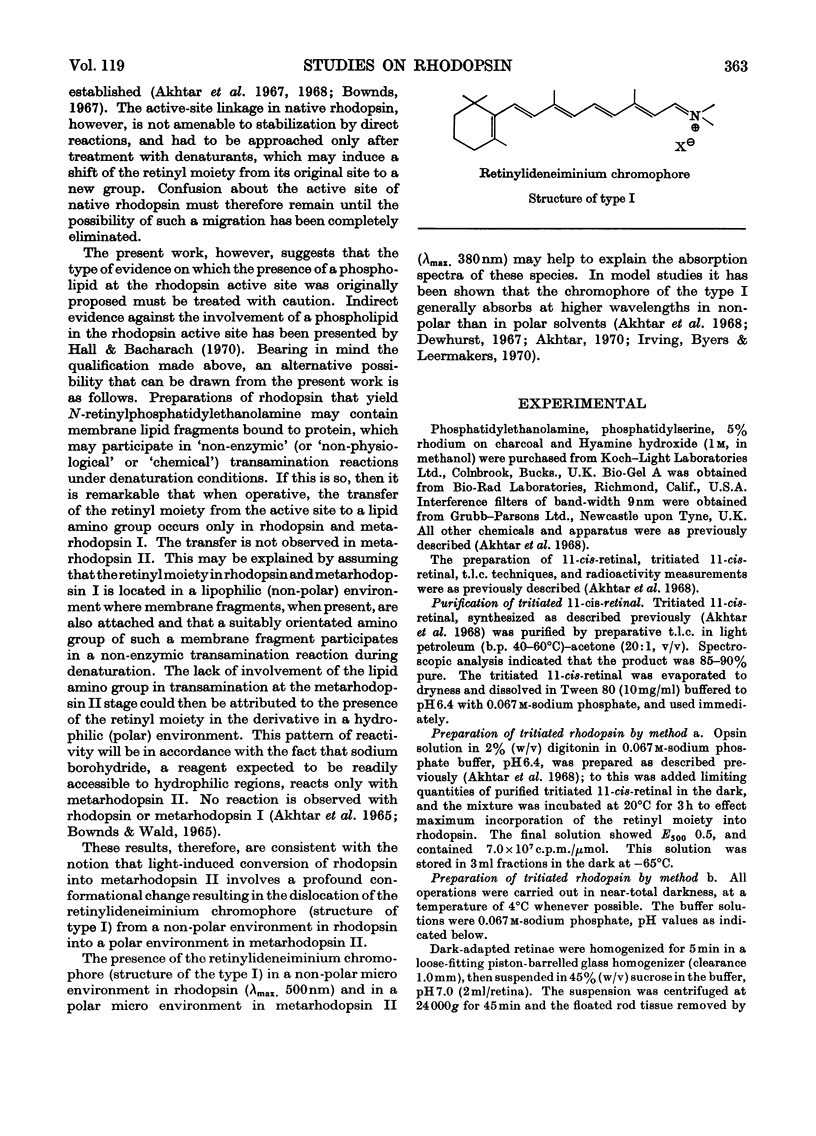
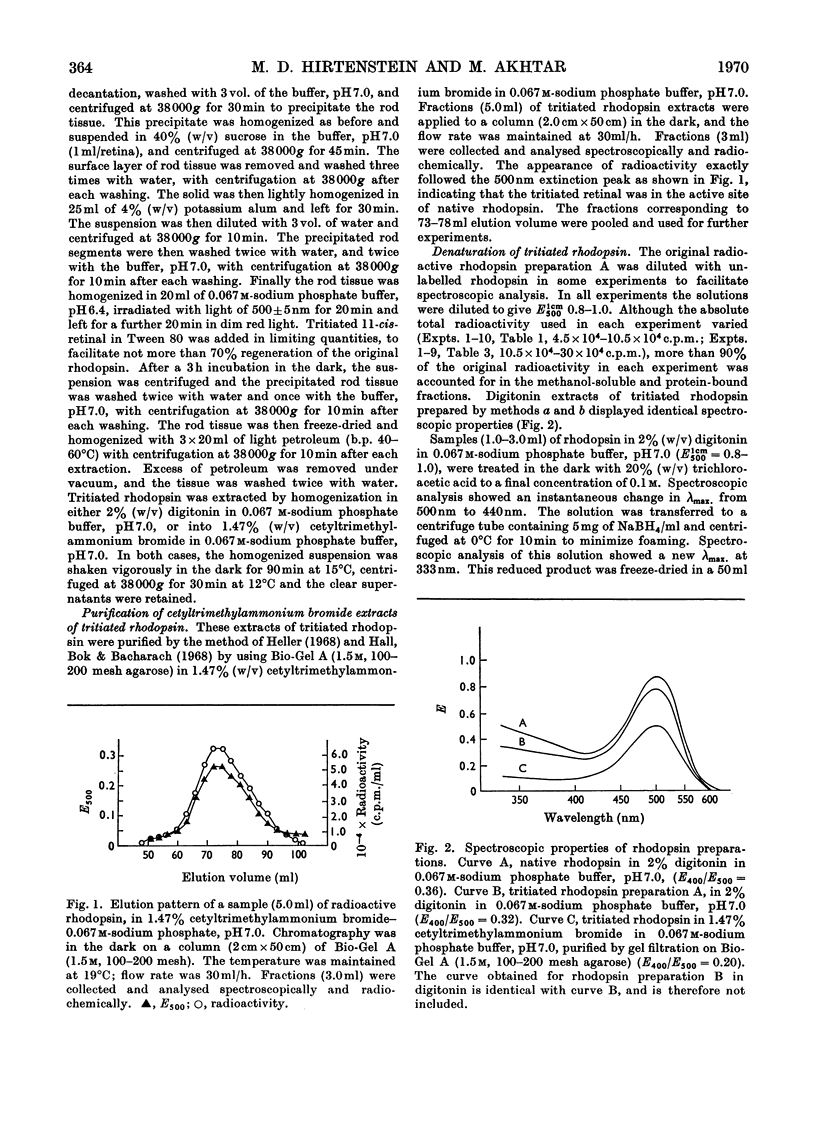
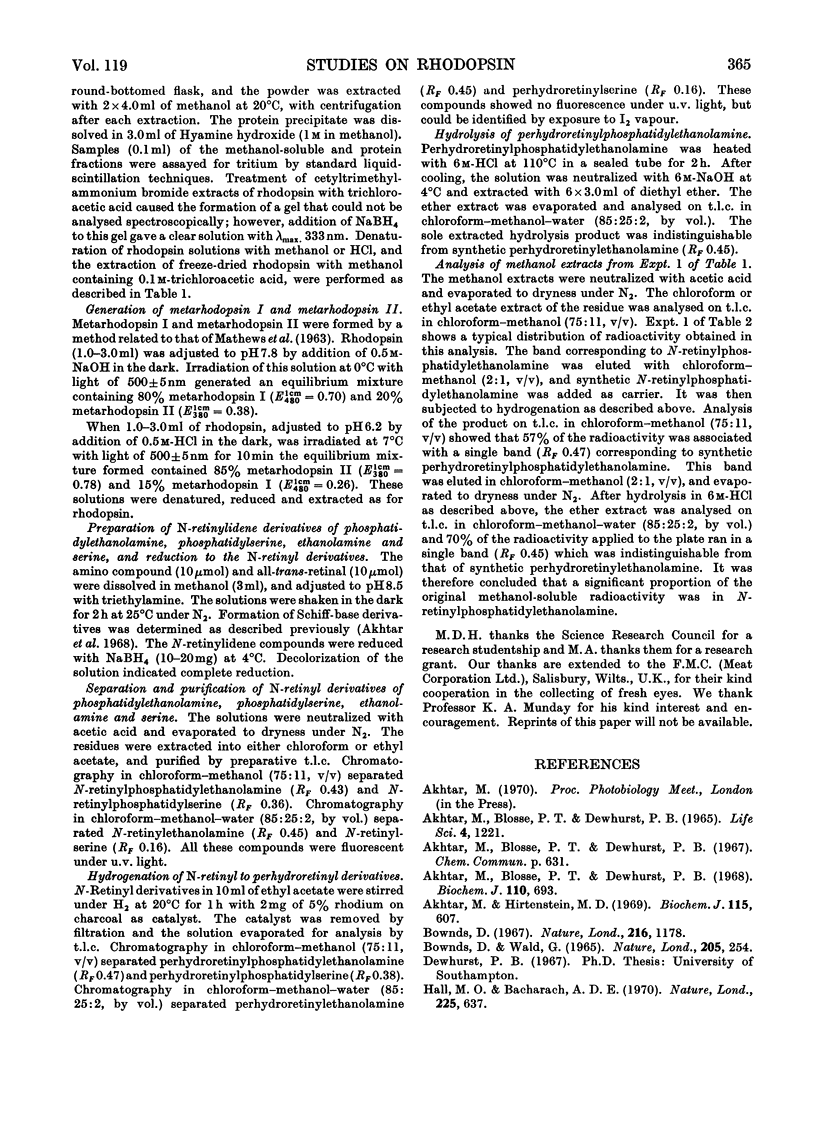
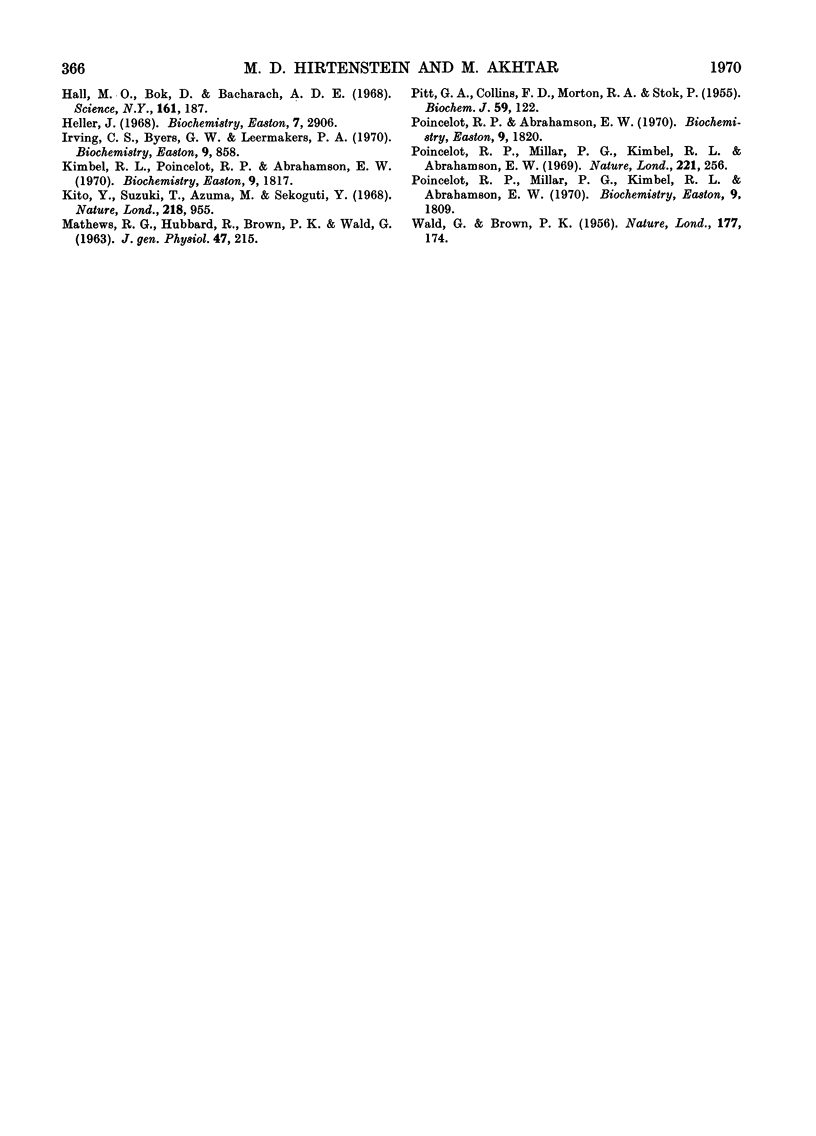
Selected References
These references are in PubMed. This may not be the complete list of references from this article.
- Akhtar M., Blosse P. T., Dewhurst P. B. Studies on vision. The nature of the retinal-opsin linkage. Biochem J. 1968 Dec;110(4):693–702. doi: 10.1042/bj1100693. [DOI] [PMC free article] [PubMed] [Google Scholar]
- Akhtar M., Blosse P. T., Dewhurst P. B. The reduction of a rhodopsin derivative. Life Sci. 1965 Jun;4(12):1221–1226. doi: 10.1016/0024-3205(65)90336-x. [DOI] [PubMed] [Google Scholar]
- Akhtar M., Hirtenstein M. D. Chemistry of the active site of rhodopsin. Biochem J. 1969 Nov;115(3):607–608. doi: 10.1042/bj1150607. [DOI] [PMC free article] [PubMed] [Google Scholar]
- BOWNDS D., WALD G. REACTION OF THE RHODOPSIN CHROMOPHORE WITH SODIUM BOROHYDRIDE. Nature. 1965 Jan 16;205:254–257. doi: 10.1038/205254a0. [DOI] [PubMed] [Google Scholar]
- Bownds D. Site of attachment of retinal in rhodopsin. Nature. 1967 Dec 23;216(5121):1178–1181. doi: 10.1038/2161178a0. [DOI] [PubMed] [Google Scholar]
- Hall M. O., Bacharach A. D. Linkage of retinal to opsin and absence of phospholipids in purified frog visual pigment 500. Nature. 1970 Feb 14;225(5233):637–638. doi: 10.1038/225637a0. [DOI] [PubMed] [Google Scholar]
- Heller J. Structure of visual pigments. I. Purification, molecular weight, and composition of bovine visual pigment500. Biochemistry. 1968 Aug;7(8):2906–2913. doi: 10.1021/bi00848a030. [DOI] [PubMed] [Google Scholar]
- Irving C. S., Byers G. W., Leermakers P. A. Spectroscopic model for the visual pigments. Influence of microenvironmental polarizability. Biochemistry. 1970 Feb 17;9(4):858–864. doi: 10.1021/bi00806a020. [DOI] [PubMed] [Google Scholar]
- Kimbel R. L., Jr, Poincelot R. P., Abramhamson E. W. Chromophore transfer from lipid to protein in bovine rhodopsin. Biochemistry. 1970 Apr 14;9(8):1817–1820. doi: 10.1021/bi00810a022. [DOI] [PubMed] [Google Scholar]
- Kito Y., Suzuki T., Azuma M., Sekoguti Y. Absorption spectrum of rhodopsin denatured with acid. Nature. 1968 Jun 8;218(5145):955–957. doi: 10.1038/218955a0. [DOI] [PubMed] [Google Scholar]
- MATTHEWS R. G., HUBBARD R., BROWN P. K., WALD G. TAUTOMERIC FORMS OF METARHODOPSIN. J Gen Physiol. 1963 Nov;47:215–240. doi: 10.1085/jgp.47.2.215. [DOI] [PMC free article] [PubMed] [Google Scholar]
- PITT G. A., COLLINS F. D., MORTON R. A., STOK P. Studies on rhodopsin. VIII. Retinylidenemethylamine, an indicator yellow analogue. Biochem J. 1955 Jan;59(1):122–128. doi: 10.1042/bj0590122. [DOI] [PMC free article] [PubMed] [Google Scholar]
- Poincelot R. P., Abrahamson E. W. Phospholipid composition and extractability of bovine rod outer segments and rhodopsin micelles. Biochemistry. 1970 Apr 14;9(8):1820–1825. doi: 10.1021/bi00810a023. [DOI] [PubMed] [Google Scholar]
- Poincelot R. P., Millar P. G., Kimbel R. L., Jr, Abrahamson E. W. Determination of the chromophoric binding site in native bovine rhodopsin. Biochemistry. 1970 Apr 14;9(8):1809–1816. doi: 10.1021/bi00810a021. [DOI] [PubMed] [Google Scholar]
- Poincelot R. P., Millar P. G., Kimbel R. L., Jr, Abrahamson E. W. Lipid to protein chromophore transfer in the photolysis of visual pigments. Nature. 1969 Jan 18;221(5177):256–257. doi: 10.1038/221256a0. [DOI] [PubMed] [Google Scholar]
- WALD G., BROWN P. K. Synthesis and bleaching of rhodopsin. Nature. 1956 Jan 28;177(4500):174–176. doi: 10.1038/177174a0. [DOI] [PubMed] [Google Scholar]


